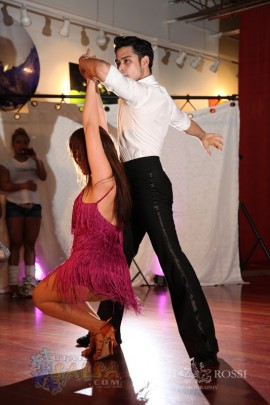
Too many people leave competition events angry or unhappy. Some refuse to participate in them, because they feel they are ‘unfair’ or ‘bias.’ Without understanding, most people cannot accept what they don’t like. This is why so many people don’t like competitions. So, I have been itching for some time now, to publish this article before you. I hope to change the way you, the audiences, competitors, judges, organizers look at these events, so that everyone may experience its beauty.
Spontaniety, Entertainment, and Comparison
Social dancing is about spontaneity, Show pieces are about entertainment, and Competition is a comparison. A comparison of competitors , hence 1st is over 2nd, and 3rd is over 4th etc…
This leads to the philosophical question; what is being compared?
‘What is being judged: the people dancing or the authentic dance itself?’
I’d like to give credit and reference to Ruud Vermeij, Latin Dancing, Thinking Sensing Doing, to help in providing us the vocabulary and platform to examine this further.
Costumes, Presence, Confidence or Tricks, Dips, Spins, or the elusive term “”Salsa Dance.”” Obviously there is merit to include many factors, but the goal is to isolate the biggest factors! So, to what degree is the authenticity of a dance style important? I propose, EXTREMELY! Consider the following problem:
Dance evolves, as everything does, and we must be conscience that this evolution may lead us to a very different dance altogether. One that hardly resembles its roots. For example, when a competitor takes jazz, or hip hop, and incorporates that into their Salsa competition routine. The audience cheers. A competitor puts in flips and tricks, and the audience cheers some more… At what point will you question yourself, “”is this salsa?”” At what point will you say, “”this is not salsa?”” What about music mixing into salsa songs… at what point will you question or say the same thoughts?
I do not go so far as to say that you cannot incorporate your jazz, hip hop, cheer squad, movements or music into your competition routine.. Its to say that without some elements of the authentic form of salsa, in movement and in music, you are then obviously presenting something other than salsa. Do you agree?
Authentic Salsa
What make authentic salsa? Especially since, its a vital element to the competition. Fortunately, this is not up to any one person, its up to many people and the history books.
If you were the only person on the planet, green can be any color you want it to be. So what is authentic salsa? Lets look at what the authorities and prominent figures would have to say all around the globe about what movements are salsa. Let us then take what is most common amongst them all, and set that in stone as salsa.
I have no doubts we would expect to see things like basic, crossbody lead, outside and inside turns. I bet we wouldn’t see flips, Pique turns, or su-su’s, first and third positions. (thats a whole different article)
This research is important to the salsa-dance industry as a whole, to give competitions and competitors a platform to evolve from. Without this, salsa will be ballroom, will be jazz, will be cheer tricks…
Competitive Event Advice
For the competitors- It will be important for competitive events to define some of these subjective qualities of movement and music that they will be expecting the judges to look for. In addition to add other judging elements that are unique to the events goals.
For the judges – The same set of criteria given to the competitors, must be given and explained to the judges. The idea is to prevent any bias and unfair advantages by having more clarity on the subjective elements of the competition.
For the audience – To be presented with the same criteria, as a platform for the audience to understand the outcomes.
To illustrate and put into practice this article, I will be doing two events followed with write ups… A Jack and Jill Competition and a Bachata Competition. Look forward for the updates!
”

